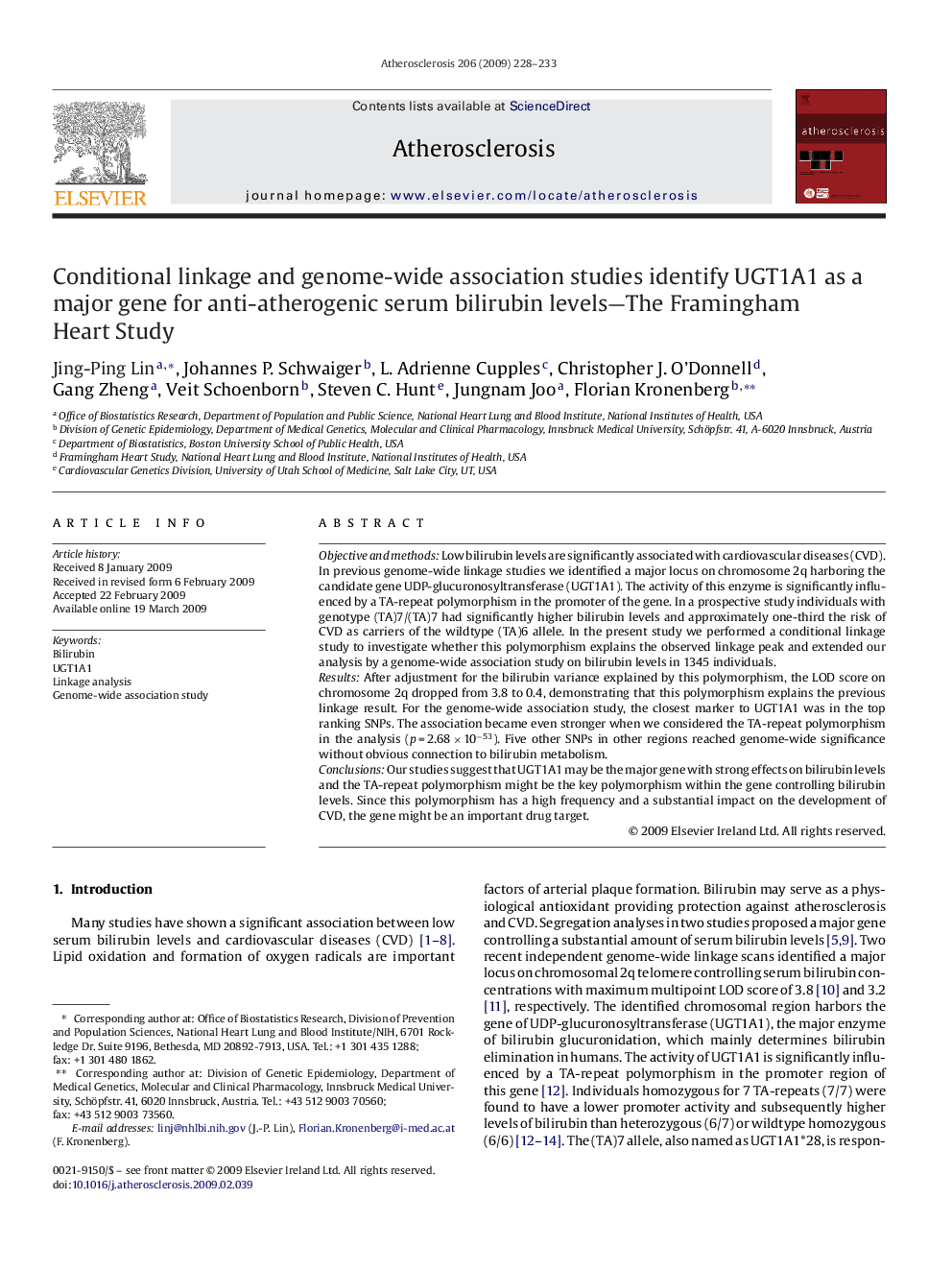| Article ID | Journal | Published Year | Pages | File Type |
|---|---|---|---|---|
| 2893296 | Atherosclerosis | 2009 | 6 Pages |
Objective and methodsLow bilirubin levels are significantly associated with cardiovascular diseases (CVD). In previous genome-wide linkage studies we identified a major locus on chromosome 2q harboring the candidate gene UDP-glucuronosyltransferase (UGT1A1). The activity of this enzyme is significantly influenced by a TA-repeat polymorphism in the promoter of the gene. In a prospective study individuals with genotype (TA)7/(TA)7 had significantly higher bilirubin levels and approximately one-third the risk of CVD as carriers of the wildtype (TA)6 allele. In the present study we performed a conditional linkage study to investigate whether this polymorphism explains the observed linkage peak and extended our analysis by a genome-wide association study on bilirubin levels in 1345 individuals.ResultsAfter adjustment for the bilirubin variance explained by this polymorphism, the LOD score on chromosome 2q dropped from 3.8 to 0.4, demonstrating that this polymorphism explains the previous linkage result. For the genome-wide association study, the closest marker to UGT1A1 was in the top ranking SNPs. The association became even stronger when we considered the TA-repeat polymorphism in the analysis (p = 2.68 × 10−53). Five other SNPs in other regions reached genome-wide significance without obvious connection to bilirubin metabolism.ConclusionsOur studies suggest that UGT1A1 may be the major gene with strong effects on bilirubin levels and the TA-repeat polymorphism might be the key polymorphism within the gene controlling bilirubin levels. Since this polymorphism has a high frequency and a substantial impact on the development of CVD, the gene might be an important drug target.
